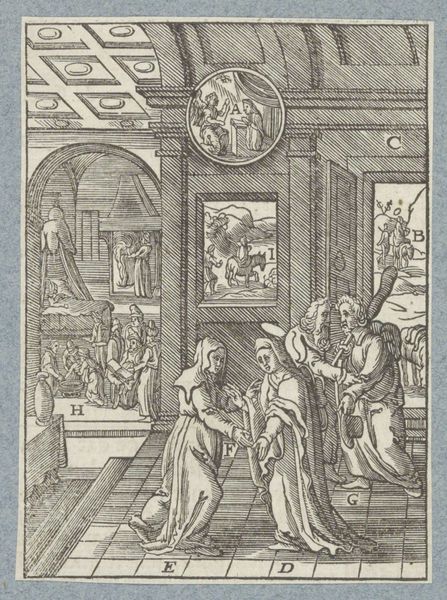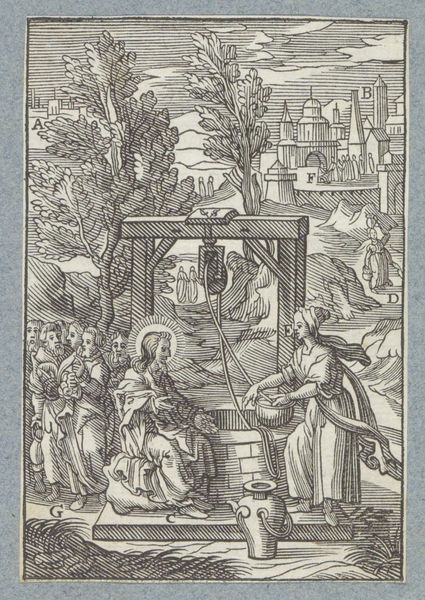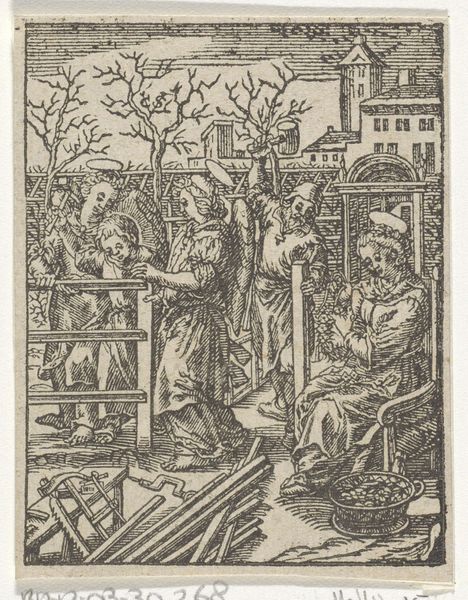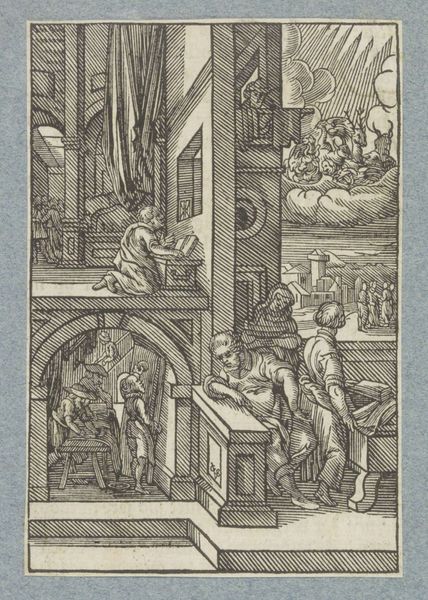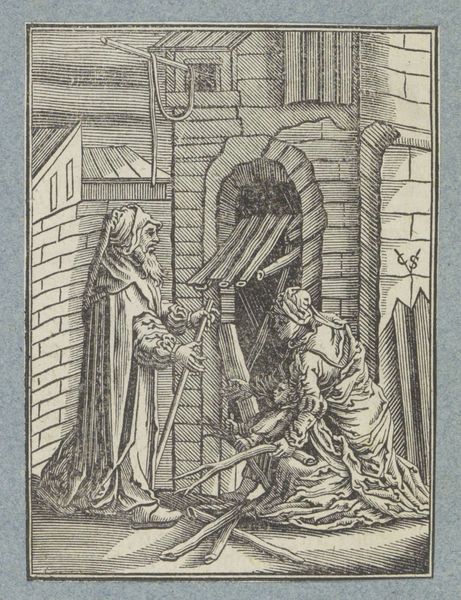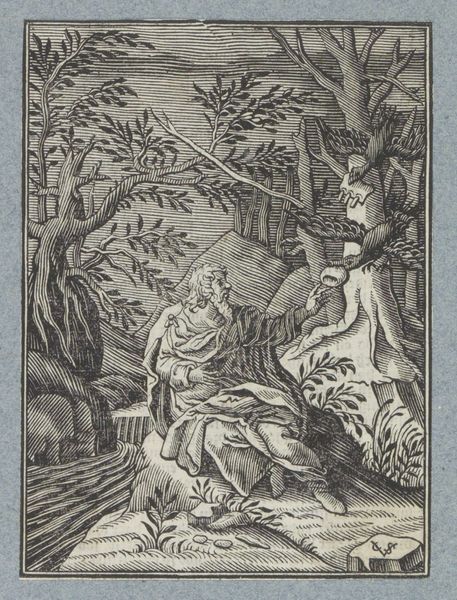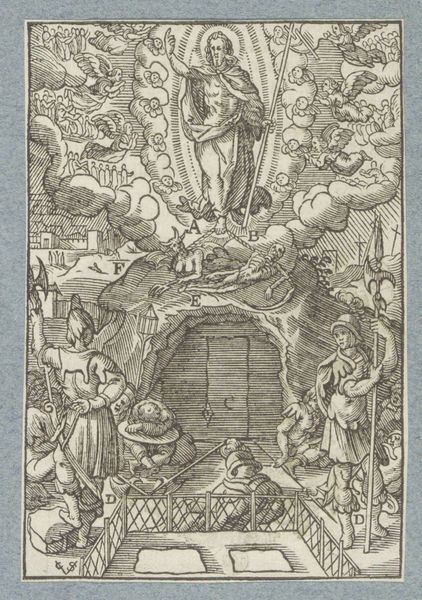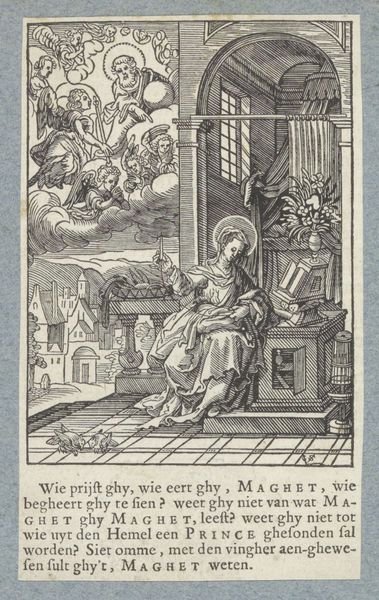
Fillippus wordt door een engel naar een eunuch gestuurd before 1646
0:00
0:00
christoffelvaniisichem
Rijksmuseum
print, engraving
#
baroque
# print
#
figuration
#
line
#
history-painting
#
engraving
Dimensions: height 111 mm, width 75 mm
Copyright: Rijks Museum: Open Domain
Curator: Here we have a work by Christoffel van Sichem II, titled "Fillippus wordt door een engel naar een eunuch gestuurd"—"Philip is sent by an angel to a eunuch." It’s an engraving dating from before 1646, held here at the Rijksmuseum. Editor: It feels…claustrophobic, even though it's attempting to depict a broad landscape. The tight lines, the rigid perspective. There's a tension between the heavenly and the mundane in the staging that creates something unsettling. Curator: Unsettling in a good way, perhaps? Baroque art often plays with that contrast. Note the figure of Philip, seemingly caught mid-thought as an angel directs him onward, while in the background the eunuch's chariot is passing by. Van Sichem really puts line to work. The materiality of this work feels very of its time. Editor: Absolutely, there is a mastery in this almost obsessive rendering with what is essentially, a single line; you almost sense the labor involved. I also find myself focusing on the more mundane elements—the domestic setting contrasted with the implied journey of spiritual discovery, symbolized by the encounter with the eunuch on the road. How those physical realities would determine social experiences—those class and power structures must have influenced the consumption and interpretations of such imagery at the time. Curator: Yes! The division of space contributes greatly to that reading. Consider that in an engraving every line must be deliberately cut—a physical act aligning it to that labor and the making that you’ve mentioned. And the objects around Philip, what books they might be, who would have afforded to spend time at leisure indoors back then, compared with someone on the road? All are so much tied together. Editor: These early prints often became instruments in broader social and political networks that went far beyond a mere transaction, influencing how information was disseminated—like early news broadcasts. The details may be modest, but the underlying themes touch upon timeless notions of divinity and selfhood. Curator: Agreed. It serves as a reminder of how our personal narratives often intertwine with much larger, interconnected stories of community, movement, and transformation. Editor: Looking at the landscape and imagining it being circulated across continents, you just realize the potential an artwork may hold that go beyond artistic consideration; you learn new things with any new interpretation.
Comments
No comments
Be the first to comment and join the conversation on the ultimate creative platform.

